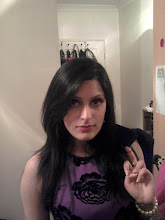This project is using my skills in Adobe After Effects, Adobe Illustrator, Adobe Photoshop. We had to create a character playing a futuristic sport for the Olympics. I first chose the idea of having 5 different characters playing 5 different sports inside each of the rings of the Olympic logo but then stuck to one as this probably would not fit in a 30 second advert. This animation was 2D and 3D mixed together. I decided to choose the sport boxing and the character of a Panda as this would stereo-typically win a fight of a smaller character. At first I thought I would create some things in 3DS Max and the rest in After Effects.
 Once I had done this, I found that when importing the 3D object into After Effects, on the main composition, it would then convert it into a 2D object again but with perspective so that it looks 3D. When you opened the object composition, it would become a 3D object so I think it was just a matter of placing it correctly in there for it to be right in the main composition therefore I left it and had decided to use 2D images of it and create it in that way because the use of transform allows you to perceive it as a 3D object when moving the planes around and connecting them. I had used a bamboo forest for the environment as well as the design of the tree stumps and bamboo sticks for the boxing ring to give a sense of where an actual panda would live.
Once I had done this, I found that when importing the 3D object into After Effects, on the main composition, it would then convert it into a 2D object again but with perspective so that it looks 3D. When you opened the object composition, it would become a 3D object so I think it was just a matter of placing it correctly in there for it to be right in the main composition therefore I left it and had decided to use 2D images of it and create it in that way because the use of transform allows you to perceive it as a 3D object when moving the planes around and connecting them. I had used a bamboo forest for the environment as well as the design of the tree stumps and bamboo sticks for the boxing ring to give a sense of where an actual panda would live.I had imported my 2D character into After Effects, I had created a front view and a side view of this so that I could use both in my main composition when needed. To animate this, I had to use the Puppet Pin tool which allows you to deform the selected part so that it moves. By having separate layers for each part of the Panda, it was easier to do this and none of the parts would move in unison without me wanting it too. I had to do it in its own composition which then got imposed into the main composition. I found this part easy to do.

My weaknesses were that I don’t think I tackled the “futuristic” element very well therefore could have improved by adjusting the sport itself so it would fit within the brief. I think that I could have added another character into it so that the Panda would be fighting against another.
By doing this project, I am now able to create simple 2D cartoons and advertisements as well as idents. A lot of animation work in Television and Film has the use of programs like Adobe After Effects in various forms such as the use of CGI or simply cartoon characters. This means mixing the use of moving image and 3D animation into it too.


















































